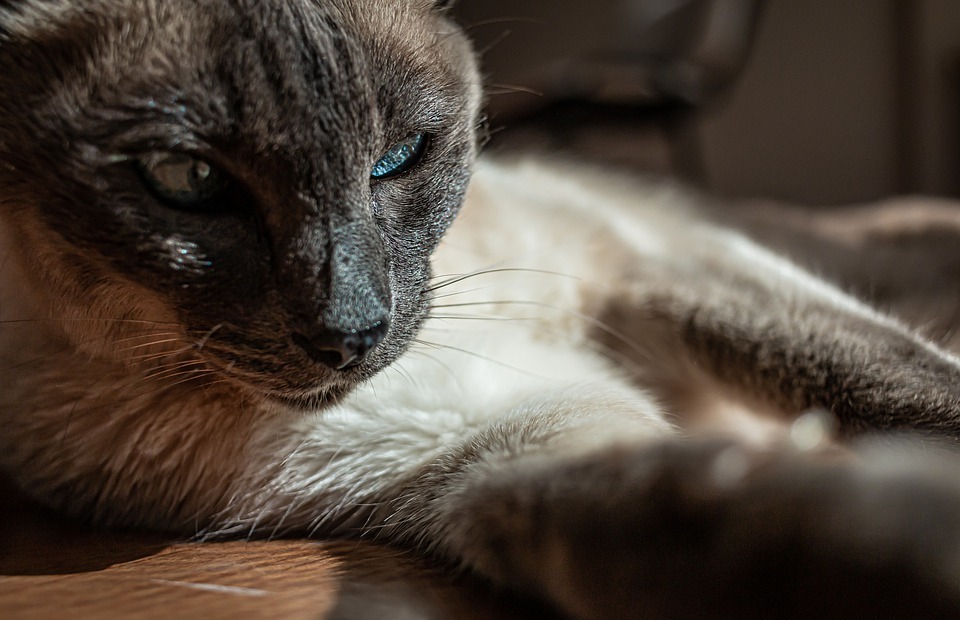This article will delve into the fascinating world of feline COVID-19 susceptibility. We'll explore whether cats can contract the virus, how it might affect them, and what steps you can take to protect your furry friend. We'll examine the latest scientific findings, provide insights into transmission, and offer guidance on keeping your cat safe.
Part 1: Understanding the Science

1.1. A Brief History: The Discovery of Feline Susceptibility
The COVID-19 pandemic, caused by the SARS-CoV-2 virus, has presented a unique challenge for both humans and animals. Early research focused on human transmission and potential zoonotic risks. In 2020, a breakthrough occurred: scientists discovered that cats, particularly domestic shorthair cats, could contract the virus. This finding sparked concern and prompted further investigation into feline COVID-19. The first documented case of a cat testing positive for SARS-CoV-2 was in Hong Kong, followed by reports from other countries, solidifying the reality of feline susceptibility.
1.2. The Virus and Its Impact on Cats: A Deeper Dive
The SARS-CoV-2 virus, responsible for COVID-19 in humans, can also infect cats. While the virus may not necessarily cause severe illness in all cats, it can lead to a range of symptoms. Understanding these symptoms is crucial for early detection and potential veterinary intervention. The virus enters the cat's body through the respiratory system, primarily through the nose or mouth. It then replicates in the cells lining the respiratory tract, potentially causing inflammation and damage.
1.3. How Cats Contract COVID-19: Transmission and Risk Factors
The transmission of COVID-19 from humans to cats, and vice versa, is a complex process. Factors such as close contact, viral load, and individual susceptibility play a role. It is important to be aware of these factors to mitigate the risk of transmission.
1.3.1. Human-to-Cat Transmission
The primary mode of transmission from humans to cats is through close contact. This could include:
- Direct contact, such as petting or cuddling.
- Sharing spaces, like living in the same household.
- Exposure to respiratory droplets, such as sneezing or coughing.
1.3.2. Cat-to-Human Transmission
While less common than human-to-cat transmission, there have been documented cases of cats transmitting COVID-19 to humans. This transmission often occurs through close contact, especially with cats exhibiting symptoms.
1.3.3. Risk Factors: Identifying Susceptible Individuals
Certain factors can increase a cat's susceptibility to COVID-19, including:
- Age: Older cats, with weakened immune systems, might be more vulnerable.
- Underlying Health Conditions: Cats with pre-existing health issues, such as respiratory diseases, may experience more severe symptoms.
- Breed: Domestic shorthair cats have been identified as potentially more susceptible than some other breeds.
- Viral Load: A higher viral load in the infected individual, whether human or feline, can increase the chances of transmission.
Part 2: Symptoms and Diagnosis

2.1. A Spectrum of Symptoms: From Mild to Severe
COVID-19 in cats can manifest in various ways, ranging from mild symptoms to severe illness. Recognizing the potential signs is crucial for timely veterinary attention.
- Mild Symptoms: Sneezing, coughing, lethargy, loss of appetite, and runny nose.
- Moderate Symptoms: Difficulty breathing, fever, and vomiting.
- Severe Symptoms: Pneumonia, respiratory distress, and potential complications.
It is important to note that not all cats exhibiting these symptoms will have COVID-19. Other respiratory illnesses are common in cats.
2.2. Diagnosing Feline COVID-19: Tests and Procedures
Diagnosing COVID-19 in cats involves a combination of clinical signs, medical history, and laboratory tests. Veterinary professionals use various tests to confirm a diagnosis and determine the best course of treatment.
2.2.1. PCR Testing
The polymerase chain reaction (PCR) test is the gold standard for diagnosing COVID-19 in cats. It detects the presence of viral RNA in nasal or oral swabs, providing a definitive diagnosis.
2.2.2. Serological Testing
Serological tests, which detect antibodies against the virus in a blood sample, can be used to identify past infections.
Part 3: Treatment and Management

3.1. The Importance of Veterinary Care: Providing Support for Your Cat
If you suspect your cat may have COVID-19, prompt veterinary care is essential. A qualified veterinarian can assess your cat's condition, provide appropriate treatment, and monitor their progress. Early intervention can significantly improve outcomes.
3.2. Treatment Options: Supportive Care and Antiviral Therapy
Treatment for COVID-19 in cats typically involves supportive care, aimed at managing symptoms and boosting the immune system. In some cases, antiviral medications may be used to combat the virus.
3.2.1. Supportive Care
This may include:
- Fluid therapy: To prevent dehydration.
- Oxygen therapy: To assist with breathing difficulties.
- Antibiotics: To treat secondary bacterial infections.
- Anti-inflammatory medications: To reduce inflammation in the respiratory system.
3.2.2. Antiviral Therapy
The use of antiviral medication for COVID-19 in cats is still under investigation, and its efficacy is not fully established. If your cat is diagnosed with COVID-19, your veterinarian will discuss the most appropriate treatment plan for their individual needs.
Part 4: Preventing Transmission: Safeguarding Your Cat and Family
4.1. Reducing Risk: Tips for Minimizing Transmission
Prevention is key to protecting both your cat and your family from COVID-19. Implementing measures to reduce transmission can significantly lower the risk of infection.
- Hand Hygiene: Frequent handwashing with soap and water is crucial, especially after interacting with your cat or potentially contaminated surfaces.
- Social Distancing: Maintain physical distance from your cat if you are experiencing symptoms of COVID-19.
- Isolation: If you test positive for COVID-19, isolate yourself from your cat to prevent potential transmission. Consider using separate rooms and minimizing contact.
- Disinfection: Regularly disinfect surfaces your cat may come into contact with, such as food and water bowls, toys, and bedding.
- Avoid Sharing: Do not share eating utensils or drinking glasses with your cat.
4.2. Vaccination Considerations: Potential for Feline COVID-19 Vaccines
While there are no currently available vaccines specifically for cats against COVID-19, ongoing research explores the possibility of developing such vaccines. Staying informed about advancements in vaccine development is important.
Part 5: FAQs
5.1. Can cats transmit COVID-19 to humans?
Yes, while less common than transmission from humans to cats, there have been documented cases of cats transmitting COVID-19 to humans. It's essential to follow proper hygiene measures and minimize close contact with your cat, especially if you are experiencing symptoms.
5.2. Should I worry if my cat has a cough or sneeze?
While coughing and sneezing are common symptoms of COVID-19 in cats, they can also be associated with other respiratory illnesses. It's always best to consult your veterinarian for a proper diagnosis and guidance.
5.3. Are some cats more susceptible to COVID-19?
While any cat can contract COVID-19, certain factors can increase susceptibility, including age, underlying health conditions, and breed. Older cats or those with compromised immune systems may be at a higher risk.
5.4. What should I do if my cat shows signs of COVID-19?
Immediately contact your veterinarian. They can assess your cat's condition, provide proper treatment, and guide you through the necessary steps.
5.5. Is it safe to keep my cat indoors during the pandemic?
Keeping your cat indoors, especially if you are concerned about transmission, can significantly reduce their exposure to the virus. However, ensure they have adequate enrichment and mental stimulation.
5.6. How long can COVID-19 stay on surfaces?
The virus can survive on surfaces for varying periods, depending on factors like temperature and humidity. Following proper disinfection protocols for surfaces your cat may come into contact with is crucial.
5.7. Can I get COVID-19 from my cat's litter box?
While it's theoretically possible, the risk of transmission from a cat's litter box is considered low. Good hygiene practices, such as wearing gloves while cleaning the litter box and washing your hands thoroughly afterwards, are important.
5.8. Can I travel with my cat during the pandemic?
Traveling with your cat during the pandemic requires careful planning and consideration of potential risks. Check travel restrictions and regulations for both your destination and your point of origin, and follow any necessary health protocols for both yourself and your cat.
Everyone is watching
-

Are Cat Ribs Flexible? Understanding Their Anatomy
CATS & KITTENSThis article delves into the fascinating world of feline anatomy, exploring the flexibility of cat ribs and ho...
-

Can Cats Eat Bananas? (Everything You Need to Know)
CATS & KITTENSThis article dives into the intriguing question of whether cats can safely enjoy the sweet, yellow fruit, bana...
-

Cat Lifespan: How Long Do Cats Live?
CATS & KITTENSThis comprehensive guide explores the factors influencing the lifespan of our feline companions, providing ins...
-

Can Cats Get COVID-19? What You Need to Know
CATS & KITTENSThis article will delve into the fascinating world of feline COVID-19 susceptibility. We'll explore whether ca...
-

Can Cats Eat Eggs? A Complete Guide to Egg Safety for Your Feline Friend
CATS & KITTENSWhen it comes to treating our furry companions, we all want to ensure we're doing what's best for them. Eggs...
